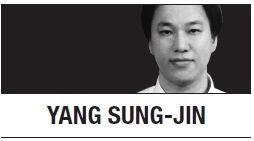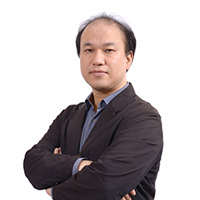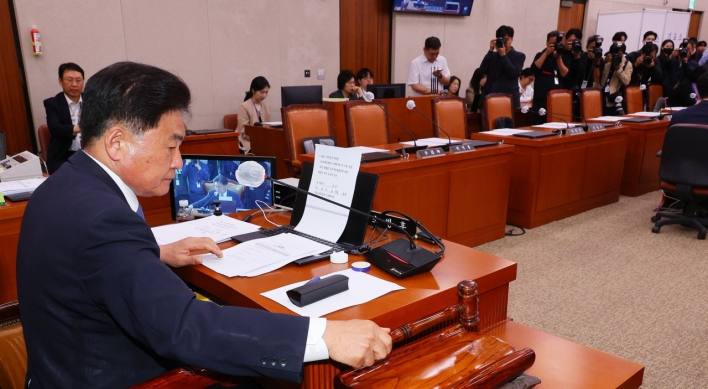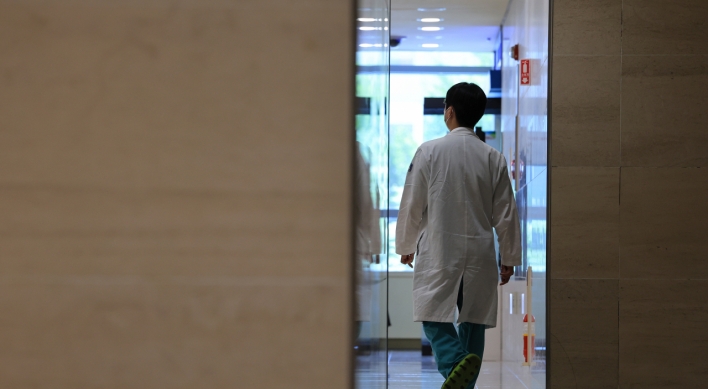[Digital Simplicity] Mask up for yourself and others
By Yang Sung-jinPublished : April 3, 2020 - 11:58

When I got out of my apartment and took the elevator down to the first floor, I happened to stand with a neighbor who did not wear a face mask. I got a little nervous about his apparent violation of basic guidelines to prevent the spread of the novel coronavirus, but tried not to express such a feeling. But the thought of getting infected in an enclosed space made me feel uneasy during the brief elevator ride.
Is this too much? Perhaps I overreacted a bit.
But a number of people in South Korea and elsewhere are reacting strongly -- and rightly so -- against the threat of COVID-19. News media outlets keep pouring out gloomy and often tragic updates about surging confirmed cases and fatalities. Nobody is immune to the stark reality that the entire world is struggling to cope with the sweeping, and sometimes lethal, coronavirus outbreak.
One thing that kept bothering me in recent weeks is the striking contrast between East Asia and the US over the use of face masks. Whenever I browsed Japanese, Chinese and Korean channels on TV, I continued to witness the unmistakable scene in which most people on the streets are using face masks. Japanese politicians even began to wear masks when they held press conferences, as if they would not take even that chance themselves, simultaneously sending out the clear signal to the public that they should follow suit.
Wearing masks has been routine for Koreans. The country is often engulfed in a wave of ultrafine dust pollution, so authorities, media and apps send out warnings about high levels of fine dust regularly, urging people to wear masks when they go outside.
Koreans also opt for masks when they come down with a cold or feel under the weather so as not to infect others, as masks reduce the chance of spewing viruses or germs toward unsuspecting strangers on crowded subway trains, buses or elevators. It’s a basic courtesy as well as the minimum step to help protect each other.
In the wake of the massive outbreak of COVID-19, masks have emerged as a symbol of essential personal protection equipment here. The government, at least initially, advised everybody to wear masks. The problem was that masks were in short supply and some greedy people hoarded them for huge profits, intent on price gouging, an utterly heartless act that took advantage of the emergency situation.
Thankfully, the government stepped in and introduced a mask-rationing system. Now, people can buy two masks per week on an assigned weekday, according to their birth year. I checked out a pharmacy near my apartment complex this week and bought two masks without waiting in a long line. The rationing works, and there’s no chaos or long lines of people anxiously trying to buy masks.
Unlike East Asian nations where masks are actively used as basic protection gear, the US seems to have a totally different stance toward masks. When I saw news reports about Asian American students who intentionally avoided wearing masks for fears of being attacked in the US, I felt not only anger but also despair.
In the US, only a sick person is advised to wear a mask. Another category for those who are culturally allowed to put on masks is bank robbers, thieves and other baddies. If you are healthy, you should not put on a mask. If you put on a mask even though healthy, you might be taken as a very sick person who should be shunned like the plague or, in worse cases, a potential robber trying to hide your face.
Well, if this is one strange aspect of American culture, I don’t want to argue that it should be changed once everything is normal again. Unfortunately, this is not a normal time, and wearing masks, even though US media and “experts” have long argued otherwise, helps people protect each other in many ways.
When I saw self-styled experts in the US trying to convince the public that wearing masks is ineffective, I felt sorry for Americans.
They said surgical masks are not effective because they are not tightly sealed. My answer: Please use a better mask like the KF94, a Korean equivalent to the N95 in the US.
And they claimed the N95 mask is not intended for ordinary people because they don’t know how to use it. My answer: educate people to use it properly.
And they insisted that washing hands is more important than masks. My answer: wash hands and put on masks.
And they screamed that masks are creating a false sense of protection. My answer: everybody is now terribly freaked out, so don’t worry about having any sense of protection.
The ultimate logic of US experts keen to discourage the public from wearing masks is to secure enough masks for medical workers. My modest proposal: please, ask the US federal government to help mass-produce more masks for everybody. If any single person gets infected, other family members including those who work as doctors, nurses and other medical caregivers are bound to be infected since they live together.
Fortunately, the US media has begun to shift its stance a bit, exploring the advantage of getting the public to put on masks. Of course, what should be done first and foremost is to provide masks and other essential medical supplies to doctors, nurses and those who fight on the front lines, risking their lives.
After meeting the demand for the crucial medical group, the US government should help provide masks and other protective gear to the public.
The concern now is that US President Donald Trump is only belatedly encouraging American people to use, well, scarves instead of masks.
By Yang Sung-jin (insight@heraldcorp.com)
Yang Sung-jin is the multimedia editor of The Korea Herald. -- Ed.











![[Kim Seong-kon] Democracy and the future of South Korea](http://res.heraldm.com/phpwas/restmb_idxmake.php?idx=644&simg=/content/image/2024/04/16/20240416050802_0.jpg&u=)








![[Today’s K-pop] Zico drops snippet of collaboration with Jennie](http://res.heraldm.com/phpwas/restmb_idxmake.php?idx=642&simg=/content/image/2024/04/18/20240418050702_0.jpg&u=)